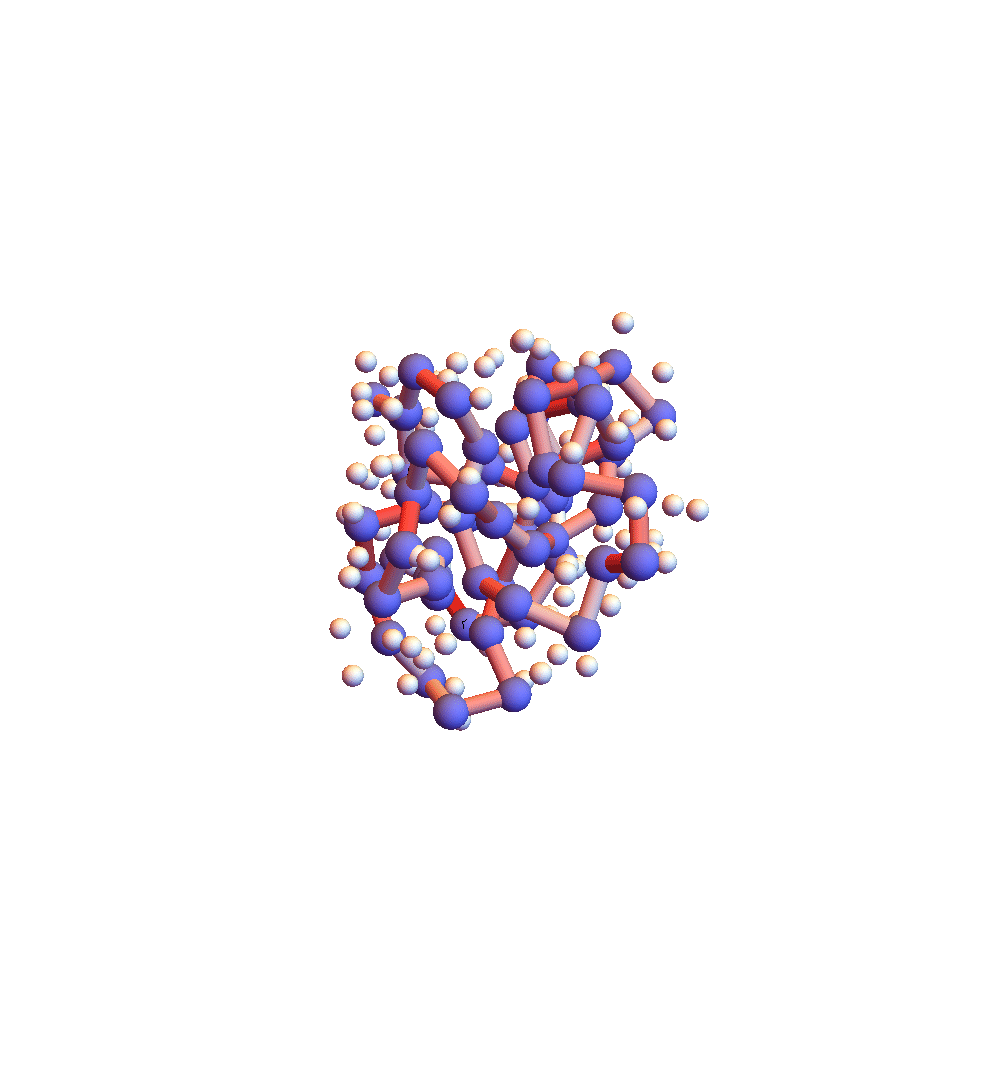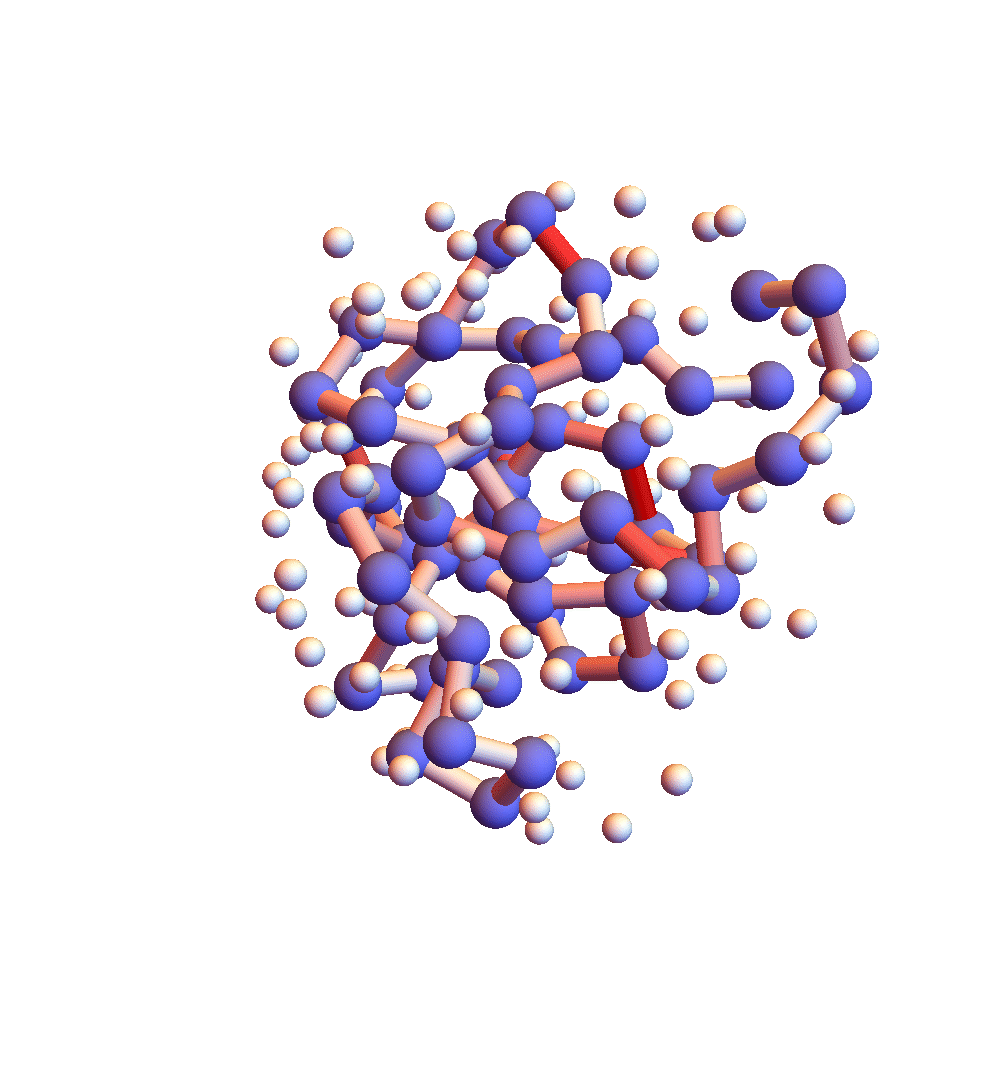Submitted by ve10 on
Proteins have no privacy rights. That they are not folding properly is something I can freely share with the readers of this blog. Though I would like to think my patients own their pathologies, in reality it is some 1,000 lines of C code that harbors the actual sickness. Those same proteins have no trouble folding outside my laptop.
Let’s recall my previous diagnoses for the presenting symptom of backbone seizure, that is, arrested movement of the backbone when there is still significant constraint discrepancy. Diagnosis 1 was that constraints were being applied too generously, even in places where there are no native litemotifs, such as loops. Diagnosis 2 was more technical: confusing signals to the ADMM algorithm peculiar to the slow propagation of information along the length of the backbone. While both of these diagnoses make valid points, I now am fairly convinced they are far off the mark.
The real problem is water intoxication. In the movie below, see if you notice a systematic progression in the backbone’s relationship to the solvent (white spheres):

Even though the constraint discrepancy makes a small improvement over the course of the 50,000 iterations shown, the fold is very far from native. The systematic change I was hoping you would notice is that, over time, the backbone is increasingly surrounding itself by solvent. My proteins are getting drunk on water!
Although it is tempting to ascribe the observed behavior to a weakness of character, there is a simple scientific explanation: solvent contacts are intrinsically less constraining than backbone contacts. Let’s quickly review how litemotif constraints work. Take our favorite test protein, 2P5K. One of its 4-residue subsequences is VKVP, for which there are 636 litemotifs extracted from the PDB. Of these, 51% are backbone contacts and 49% are motifs with a solvent contact. Just from these numbers you would think that backbone contacts have a roughly equal chance of being utilized in the folded structure. Not so.
Water contacts have an unfair advantage. The fifth atom of the litemotif, the oxygen of the water molecule, is subject only to the relatively weak constraint that it resides in the solvent region (see this post for details). So rather than find just the right backbone contact where everything “clicks”, VKVP will be content to try out the numerous solvent-contact litemotifs that impose constraints on just four of the five atoms.
I’ve written a preliminary version 4.0 solver where I can insist that a given number of contacts must be on the backbone. Below is a movie with this number set at 40 (of the possible 60) and showing just 500 iterations:

All other parameters are identical to those used for the 3.0 movie that spanned 100 times as many iterations. Although there still are a couple of things to be done before version 4.0 meets FDA approval, it appears that an antidote for water intoxication is at hand!
